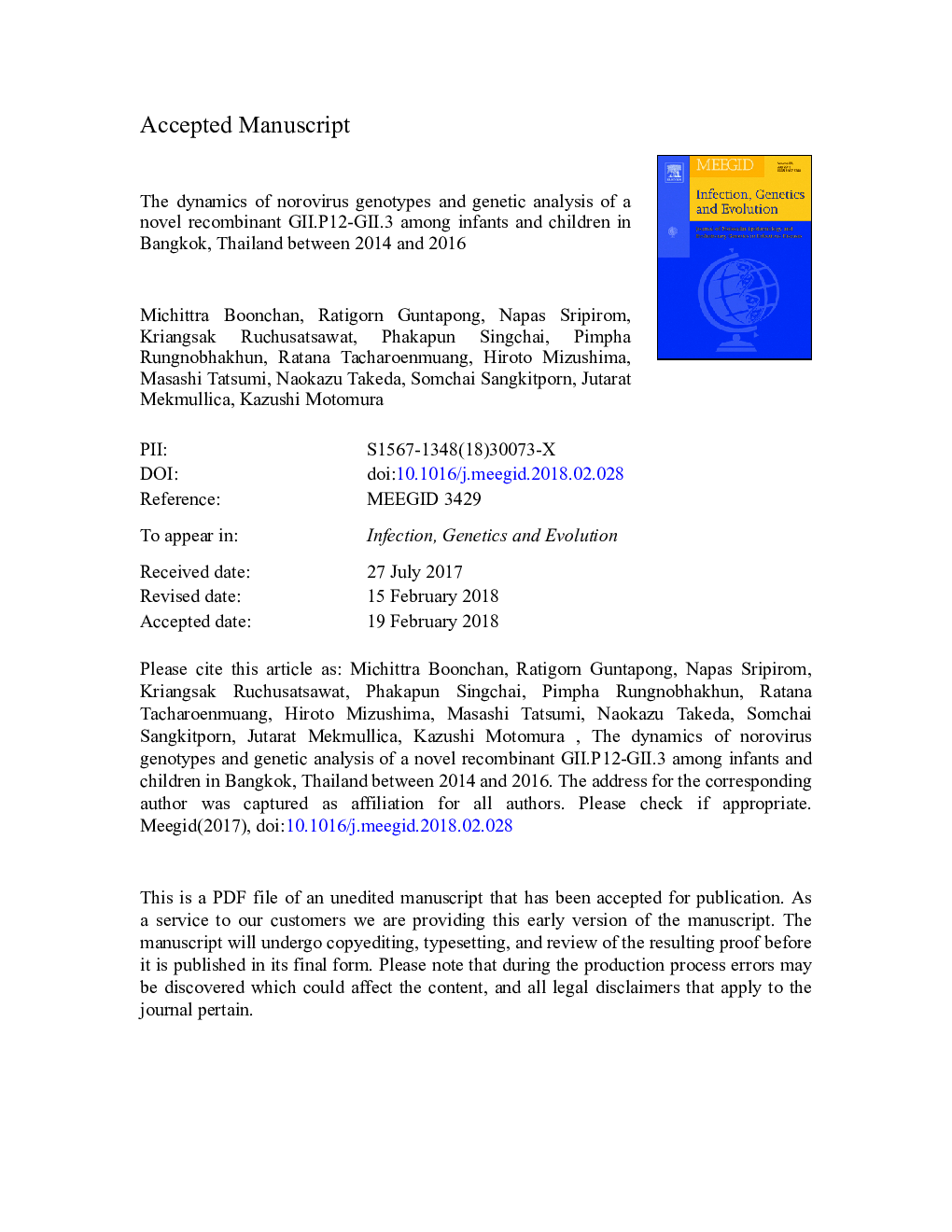| Article ID | Journal | Published Year | Pages | File Type |
|---|---|---|---|---|
| 8646889 | Infection, Genetics and Evolution | 2018 | 20 Pages |
Abstract
Norovirus (NoV) is the leading cause of viral acute gastroenteritis among all age groups in the world. We performed a molecular epidemiological study of the NoVs prevalent in Bangkok between November 2014 and July 2016 to investigate the emergence of new NoV variants in Thailand. A total of 332 stool specimens were collected from hospitalized pediatric patients with acute gastroenteritis in Bangkok, Thailand. NoVs were detected by real-time PCR. The genome of the N-terminal/shell domain was amplified, the nucleotide sequence was determined, and phylogenetic analyses were performed. GII NoV was detected in 58 (17.5%) of the 332 specimens. GII.17, a genotype strain prevalent from 2014 to mid-2015, was hardly detected and replaced by the GII.3 genotype strain. Entire genome sequencing followed by phylogenetic analysis of the GII.3 genotype strains indicated that they are new recombinant viruses, because the genome encoding ORF1 is derived from a GII.12 genotype strain, whereas that encoding ORF2-3 is from a GII.3 genotype strain. The putative recombination breakpoints with the highest statistical significance were located around the border of 3Dpol and ORF2. The change in the prevalent strain of NoV seems to be linked to the emergence of new forms of recombinant viruses. These findings suggested that the swapping of the structural and non-structural proteins of NoV is a common mechanism by which new epidemic variants are generated in nature.
Related Topics
Life Sciences
Agricultural and Biological Sciences
Ecology, Evolution, Behavior and Systematics
Authors
Michittra Boonchan, Ratigorn Guntapong, Napas Sripirom, Kriangsak Ruchusatsawat, Phakapun Singchai, Pimpha Rungnobhakhun, Ratana Tacharoenmuang, Hiroto Mizushima, Masashi Tatsumi, Naokazu Takeda, Somchai Sangkitporn, Jutarat Mekmullica, Kazushi Motomura,
